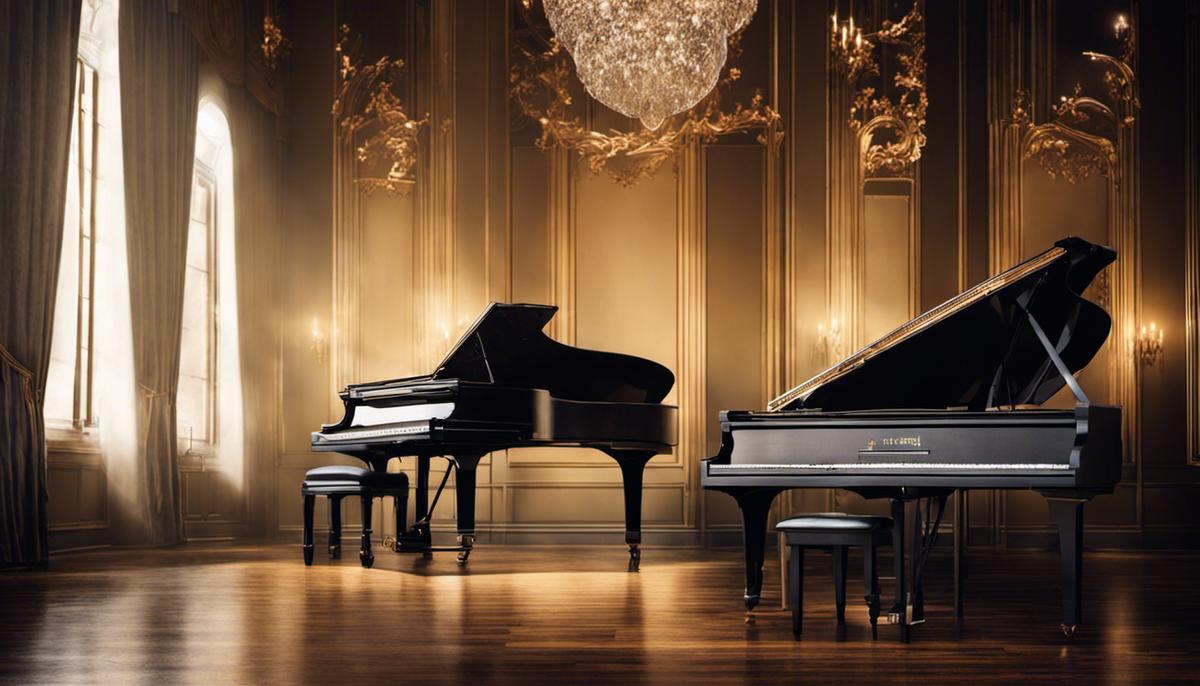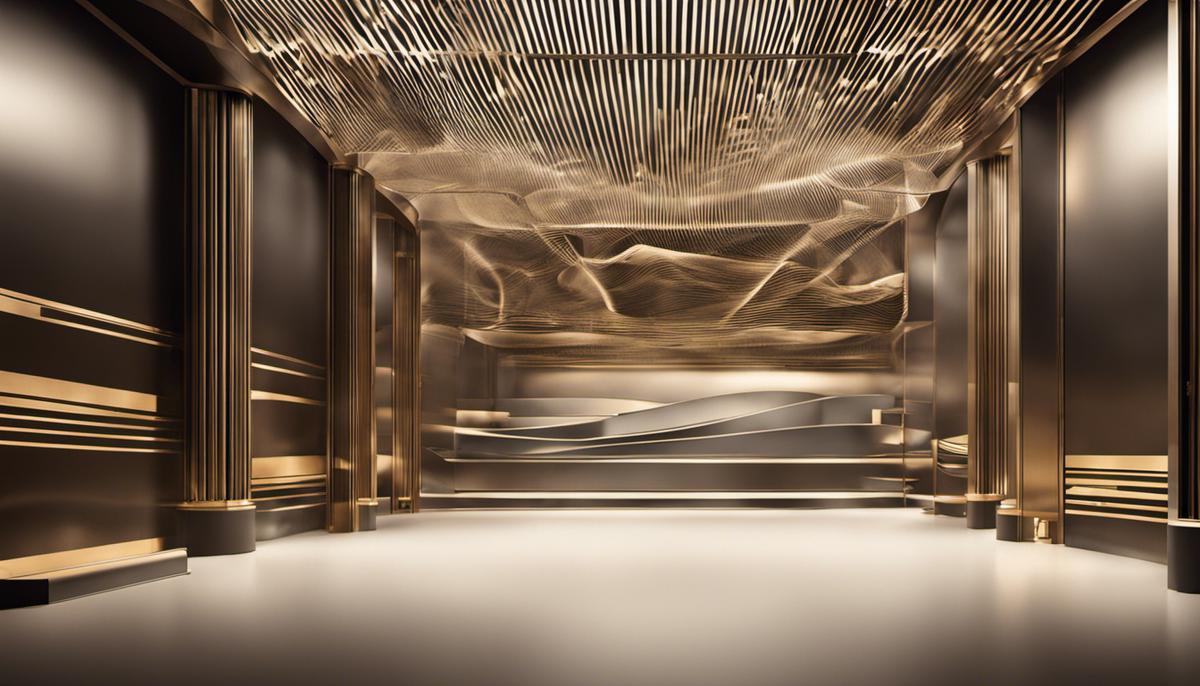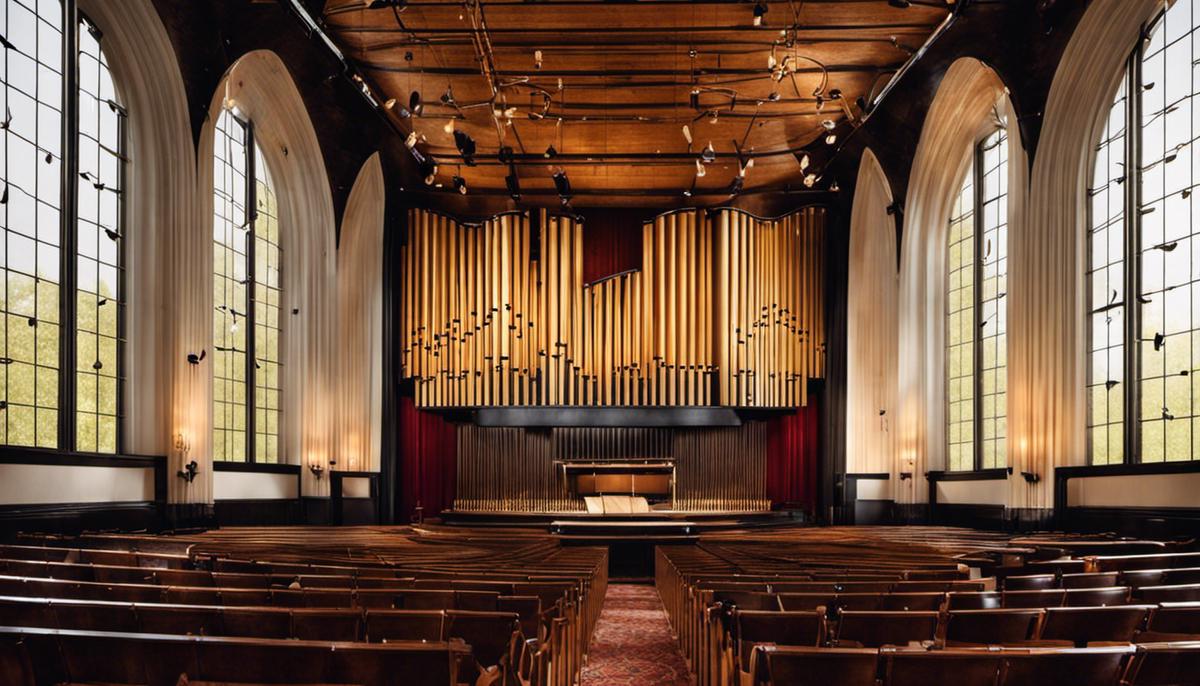Sound is a fascinating and furiously complex phenomenon that sculpts the worlds we inhabit, influencing our experiences, expressions, and environments. Engulfing us with its invisible hands, it has the power to soothe the soul with a dulcet melody, rush adrenaline with thunderous beats, or amplify tension with an eery silence. What we perceive as mere noise is, in essence, a dance of sound waves spiraling through space and time, interacting with surfaces, manoeuvring corners, and ranging off different material textures. This intricate waltz brings about phenomena like room reflections, echoes, and acoustic interference – the enigmatic characters of our sonic narratives. This exploration will chart the journey of sound waves, delve into the anatomy of acoustic interference, and identify ways to mould our rooms into more acoustically pleasing habitats – making subtle changes that can transform our auditory experiences, whether we’re hobbyists, music enthusiasts, or everyday listeners.
Understanding the Basics of Sound Wave Dynamics
Beneath the thunderous crescendos of a symphony, beneath the resonant vibes of a rock concert, and even beneath the soulful tones of a Sunday choir, there exists a world unseen, a symphony of movements, vibrations, and forces. This is the world of the physics of music. Peel back the exterior aesthetics of music and discover the beautiful scientific world that quietly brings to life all the notes we cherish. The rhythms, beats, harmonics, melodies, all magical painting in the canvas of our ears, owe their existence to exquisite laws of physics that choreograph this mesmerizing dance of vibrations. Understanding the science behind the art of music isn’t simply helpful for musicians, engineers, or technicians. It offers deep insights into the very nature of sound and, ultimately, our perception of music.
Consider this: When a guitarist strums a chord, it isn’t magic that sends wonderful vibrations through the air. It’s a complex interaction between force, tension, and vibration. The strings, each tightened to a different degree, vibrate at distinct frequencies when plucked, creating unique sounds. This is the magic of physics at play, translating tension and vibration into the tunes we love to jam to, dance or even shed a tear.
At the heart of it all is a phenomenon called “sound waves,” bundles of kinetic energy that travel from the source of the sound, like a piano or a drum, to our ears. The variations in tone we identify in music are fundamentally changes in wave frequency: greater the frequency, higher the pitch. Not forgetting harmonics, the secret ingredient behind a rich musical sound, which involves multiple frequencies playing at once. Essentially, harmonics are “resonant frequencies,” the frequencies at which an object naturally vibrates.
The physics of sound also reveals why a guitar sounds different to a flute, even when playing the same note. This particular wonder lies in the realm of timbre, the aspect of sound that allows us to distinguish between different musical instruments. Timbre is a complex blend of several frequencies produced together, molded by the materials, size, and shape of the instrument, illustrating again the intimate bond between music and physics.
Why does this matter? Well, by acknowledging the components of physics present in music, one can cultivate a deeper understanding and appreciation for the art in its entirety. It’s a mingling of art and science that seems as unlikely as it is inseparable. Imagine the charm of watching a ballet dancer when you know the forces, accelerations, and balances that make each graceful movement possible. Just like that, understanding the physics behind each vibrating string, each crashing cymbal, and each booming bass, enriches the connection with the music.
The physics embedded in music also plays an essential role in pushing the boundaries of sound technology. From the development of acoustic architecture, ensuring concert venues have the perfect sound, to the creation of intensifying surround sound systems and noise-canceling headphones; all these innovations that upscale our musical experience stem from understanding the principles of sound.
There is a rhythm and harmony in the world of physics, intertwined inseparably with the world of music. So the next time you’re swept away by a soaring melody or a pulsating bassline, remember the silent serenade of physics echoing beneath, painting this captivating masterpiece we call music.

Acoustic Interference: Refractions, Reflections and Echoes
The Invisible Intruders of Pure Harmony – Room Reflections and Echoes Explained
The symphony of music is a delicate dance between silence and sound. When every note hits just right, the collective resonance works its magic, stirring emotion and painting pictures in the mind’s eye. However, this lyrical ballet is delicately balanced; a step out of place can mar the spectacle, pulling you off the suspended disbelief that the music has drawn you into.
The unseen characters in this musical performance are room reflections and echoes; they play a more significant role than you might think. They filter, amplify, or degrade our magical resonance, sometimes ruining the dance before it has a chance to unfold.
Room reflections are the rogue notes that bounce off walls, ceilings, and floors, reaching an audience’s ears after the direct sound from the musical source. They are the products of your room’s acoustics, the complex phenomenon that dictates how sound behaves in a specific environment. When these reflected sounds interact with the direct sound, they can cause constructive interferences leading to unexpectedly louder sounds, or destructive interferences resulting in phase cancellation and dead spots. The end result: a murky and distorted faithfulness of what was initially an exquisitely composed tune.
Echoes, on the other hand, are musical ghost-notes. They are delayed reflections of the sound that reach the ears so late that they are perceived as unique repetitions of the original sound rather than part of it. Life within echoes might feel like stepping into another reality, which is seldom conducive to a captivating musical experience.
Both room reflections and echoes can play a variety of roles, either villainous or heroic. In the breathtaking legato of a violin solo, they might act as detractors, muddying the clear tone. Meanwhile, in a powerful choir piece within the hallowed halls of a cathedral, these same culprits might enhance the sound, creating that heavenly resonance.
But what can be done when room reflection and echoes conspire to wreak havoc on a sonic masterpiece? Sound treatment techniques, such as bass traps, diffusers, and absorbers, help subdue these unpredictable variables. Implementation of soundproofing materials and strategically designing a room’s layout are also effective methods to sculpt the acoustics, ensuring it complements, rather than hinders, the musical experience.
It’s a delicate balance, and the onus of creating optimal auditory environments typically lands on the shoulders of audio professionals. They are the intangible conductors, curating spaces that allow the pure, undeterred melody to shine through.
In closing, next time you sit down to revel in your favorite tune, contemplate the invisible dance occurring between room reflections and echoes. Acknowledge the dynamic interplay of this unseen ballet, for in the embrace of its unpredictability and sporadic beauty, a deeper respect for the art of music is forged.

Soundproofing and Acoustic Treatment: Solutions for Room Echo
Stride into any majestic hall, gaze up at towering walls, sense the air vibrate and you’ll feel the invisible pulse of a hush.
Whether you’re in a giant cathedral or a humble attic, one universal constant remains — sound isn’t just about what’s been played or sung; it carries an intimate relationship with the space it inhabits.
Echoes, as we’ve come to know them, aren’t just mere repetitions but intimate whispers of the room articulating its soul.
Profound reflections of sound can both be a melodic boon or a sonic ban – the invisible virtuoso or the unseen villain.
In large spaces, such as churches or grand halls, the reflection becomes the ethereal echo that lends choral melodies an otherworldly charm.
Yet, in smaller spaces such as a cozy living room or a basement recording studio, these reflections can distort sound, turning an exquisite aria into a jumbled cacophony.
Room acoustics isn’t just a vague concept to be brushed aside, but a crucial ingredient to perfect the musical recipe.
Sound absorbing materials, diffusers, bass traps and reflection panels can be the sorcerer’s stones, turning discordant abodes into harmonious havens.
Strategic placement of these sound treatment tools not only carves a path for optimal sound quality but also shapes and massages the sonic personality of the room.
Look at a concert hall, swaying in quiet anticipation, everyone eagerly beckoning one thing—a pure and crystal clear sound.
This curation of the ambiance-driven by room acoustics – is oft times the brainchild of a group of unsung heroes, the audio professionals.
Heroes who master the art of bending, twisting and reflecting sound waves around a room, creating nothing less than a sonic Picasso.
Imagine this: the hum of low frequencies vibrating your heartstrings, crystalline high notes tickling your skin, and every note in between seeping seamlessly into your senses, all while the room cradles the melody.
It’s this kind of experience that makes room acoustics an essential part of the symphony, the unseen conductor maybe, guiding each musical note to its spot in the orchestra of your auditory experience.
Indeed, the acoustics of a room can be improved, manipulated and mastered to elevate the auditory experience.
A well-planned, calculated, and implemented acoustics treatment can give the room its voice, its musical identity.
It allows us to shape and design a world that is much more than the sum of its visual elements but bridges the unspoken, unseen, and unheard; a mystical world that hums, resonates and sings with music.
The ballad of acoustics and music is a timeless one that continues to inspire, teach and liberate. Let’s keep the music playing and nary forget the melody of the room where it plays.

Case Study: DIY Acoustic Treatment at Home
Come away now on a journey into the vast world of acoustics. In your dedicated music spaces, have you ever truly considered the symbiosis of sound and space? This relationship, when understood, can open the door to a level of aural pleasure and satisfaction that was previously unfathomable.
With that said, reflections and echoes might sound like phenomena you’d come across in a physics classroom or a stretch of the Grand Canyon, but they actually play pivotal roles in our musical experiences. And no, you don’t necessarily need an advanced degree to understand them. When sound waves bounce off walls and ceilings, this creates reflections, adding depth and fullness to musical notes. Conversely, multiple reflections can cause echoes, potentially obscuring or muddying the original sound, thus impacting the overall quality.
Fortunately, artists and audio professionals aren’t left to the mercy of these reflections and echoes, as diverse range of sound treatment techniques available can be used strategically to shape the sounds we hear. Dampening materials like diffusers and bass traps manipulate reflections, absorbing, scattering, or diffusing the sound waves. This nuanced play between dispersion and absorption creates the ideal acoustic setup – the sound of silence, that wonderful absence of echo or reverberation, allowing the pristine sound to reach our ears untainted from any signal degradation.
There can be no doubt that room acoustics significantly shape the auditory experience. Next time you attend a live gig, an orchestral performance or even a vinyl session at a friend’s place, take a moment to consider the environment. The manipulation of room acoustics can make notes seem ethereal, vocals sound more poignant, and that one resonating guitar strum to forever echo in your memory. The impact is so profound that often, renowned establishments are sought after, not just for their stellar line-up, but for their immersive sound experience. It is the responsibility of audio professionals to masterfully curate these spaces for optimal musical exploration.
Drawing a parallel to another facet of life – think about how you outfit your home. The furniture and aesthetic elements chosen are a reflection of self, shaping your living environment to express your individuality. It’s the same with acoustics. Your acoustic choices have a strong bearing on the identity and aura of the music and venue. Whether it’s the heartfelt imperfections of a garage band, the rich acoustics of a cathedral choir, or the precise studio-produced sound, the setting becomes a part of the music, resonating with the emotional chord it strikes within the listener.
Music and acoustics have danced hand in hand throughout history, each influencing and shaping the other over time. Acoustic treatment is not just a passion project but an immersive journey of exploration. From understanding the nuances of sound manipulation, reflections, echoes and timbres, to creating an environment that holistically enhances the musical experience. By taking control of the acoustics in your own home, you can create a space that allows music to exude its emotion, texture, and character in the purest form.
Indeed, it’s a brave new – yet aesthetically old – world we’re stepping into. By embracing the power of acoustics, we move closer to sound. And it’s right here – in our living rooms, antiquated attics, cozy basements, we can kindle that sweet symphony of sounds, simply by understanding the science behind the art and implementing sound treatment appropriately. So, let’s dive into the deep end, absorb the rhythms, echo the resonances, and tune our lives to the wonderful world of music. As Leonard Cohen wisely shared, “There’s a crack in everything, that’s how the light gets in.” Acoustics is the eye, lets the music in.

Traversing through the circuitous landscapes of sound dynamics, we engaged in a profound dialogue about acoustic interference, room reflections, echoes, and their inherent mysteries. It’s fascinating to ponder how subtle changes in our surroundings can influence the symphony of sounds around us. From understanding these complex dynamics to initiating practical methods of acoustic treatment, soundproofing for echo control, and deciding the placement of a simple bookshelf – all subtly transform the soundscapes around us, enriching our aural experiences. As we keep exploring and experimenting within our sonic habitats, it’s a journey of enriching our auditory palette, creating immersive soundscapes, and embracing the sounds of silence. Remember – every corner, every surface, every room has its unique sound. It’s about tuning in, listening, and harnessing the perfect acoustics!

Comments.
Currently there are no comments related to this article. You have a special honor to be the first commenter. Thanks!